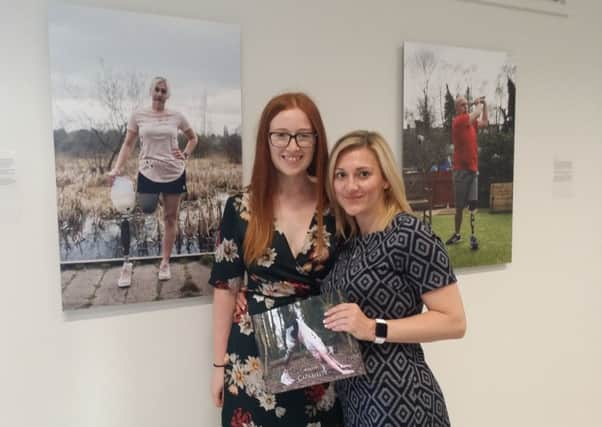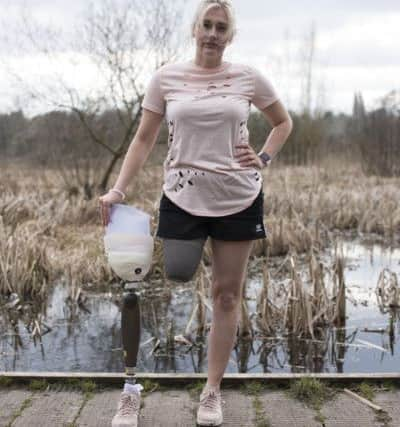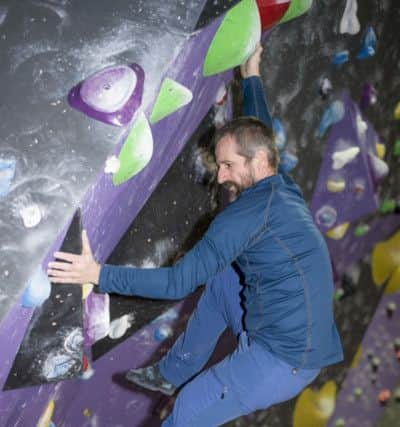Photographer challenges disabled perception with her pictures


Taking photographs of people with prosthetic limbs may seem an unlikely project but for Megan Ogley it made perfect sense. Disability became an issue very close to home for the 21-year-old from Pontefract when her father was diagnosed with multiple sclerosis.
“I couldn’t believe that people had such misconceptions about the word disabled and what it means to be disabled,” says Megan who studied photography at the University of Cumbria.
Advertisement
Hide AdAdvertisement
Hide AdIt was also her dad Mark, who gave her a passion photography.


“My dad used to work with a fireworks company and took photographs of the displays . I remember when I was about four years old seeing him working with the cameras and thought it looked so much fun.”
She studied photography at A-Level, but while other students were concentrating on landscapes and portraits Megan was fascinated with medical photography.
“I would take photographs of brain scans and the affect of smoking on the lungs,” she explains..“I have always been interested in medical photography and then when my dad was diagnosed with MS a couple of years ago I started to become interested in people’s idea about disability.”
Advertisement
Hide AdAdvertisement
Hide AdMegan decided to do some research and sent out questionnaires to see if people could define disability.


“Just 15 per cent of them got it correct, 85 per cent had no idea. They said being disabled meant you could do nothing for yourself and relied totally on others. It really surprised and shocked me.”
And so she decided to canvas the opinions of people who have learned to live with a change to their physical abilities.
She contacted two charities, Steel Bones and PACE, who introduced Megan to members of the prosthetics community and she encouraged them to share their stories and model for her.
Advertisement
Hide AdAdvertisement
Hide AdAnd the result is an exhibition, called Capability, which involves a series of images depicting the remarkable strength, capabilities and power of individuals who had either been born without a limb or lost one in later life.
“I am passionate about communicating the fundamental normality and everyday competence of people with disabilities,” says Megan.
“The images show people with amputations and prosthetics on display, portraying their strength in an activity of their choice. ‘Disability’ by definition, refers to a deficiency or dysfunction and as such evokes negative associations. Yet, although all the people portrayed here lack a limb, they do not consider themselves as less able than others.”
More than 60 people contacted Megan to take part in the project with each selecting their own location where they felt comfortable being photographed.
Advertisement
Hide AdAdvertisement
Hide AdShe applied for a grant from her university of £500 to pay her travel costs to visit the case studies.
“All the people I met were very passionate about telling their stories and were interested in the project as they haven’t heard or seen anything about disability before within photography,” says Megan, who was moved by all the stories she heard.
One in particular was a girl called Natalie Griffiths who had to have her right leg amputated above the knee after he was hit by a driver affected by drink or drugs.
“She said that afterwards everyone was so worried for her and kept telling her what she wouldn’t be able to do that she became determined to show that she could lead a normal life,” says Megan.
Advertisement
Hide AdAdvertisement
Hide Ad“When I visited her she was doing yoga. She told me her back story and yet she was so positive.”
Another case study Bjoern Eser was a rock climber who had to have his leg amputated above the knee due to cancer.
“He told me how he had started up a blog called The Active Amputee. He doesn’t care about the definition of disabled and was just amazing to listen to. I photographed him on a climbing wall and he doesn’t let his disability stop him from doing anything.”
Megan has created photobooks of the case studies which she plans to sell and a proportion of the profits will go to the Hampshire and Isle of Wight air ambulance that saved Natalie’s life.
Advertisement
Hide AdAdvertisement
Hide Ad“As a unique twist on the traditional photobook, I had an illustrator, Hazel Mason, hand draw the models, which was a unique form of seeing the traditional image transformed and added an extra thank you to the guest. Also, I have always been a fan of the traditional photobook and believe that the genre should be kept alive. “
And while the project has served its’ original purpose, for Megan it has made a lasting impression.
“For myself, the project has been incredible; I have had the opportunity to meet new people, do the work I love and make new friends.
“I have since been chosen to show my work at Free Range photographic exhibition in London and had another 175 clients show interest in being part of the project meaning it will keep growing over the next few years. I may be the photographer, but I feel lucky enough to talk and meet the people whose stories wanted to be shown, I’m just there to help them express it.”
Advertisement
Hide AdAdvertisement
Hide AdMegan graduates from the university in November with a fist class honours degree and hopes to have a career in medical photography. She also wants to keep her ties with Steel Bones.
“I recently climbed Snowden with them and there was one guy who did it just using crutches. There are so many inspirational stories that I want to tell.”
www.meganogley.co.uk